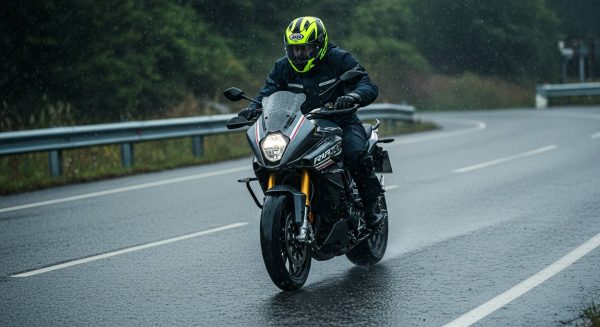Is It Safe to Ride a Bike?
Riding a motorcycle can be safe when approached with the right training, equipment, and mindset. According to the National Motorcyclists Council, proper training and preparation significantly improve rider safety. The key is understanding that safe riding begins before you even start your engine. Let’s explore how to ride a bike safely on the road with proven techniques and legal requirements.
Essential Safety Equipment for Road Riding
If you are riding a bike straight from the showroom, the tyres will need to be worn in. Expect them to be slippery; some showrooms use silicon on the tyres to make them shine, and getting this on the treads can make them treacherous. Take it easy for the first couple of hundred miles.
Before learning how to ride a bike on the road safely, you must have the correct protective gear. Start with a legally compliant helmet—this is mandatory in the UK. Add to this an armoured motorcycle jacket, protective trousers, sturdy boots covering your ankles, and strong gloves. When choosing gear, remember that Britain’s weather is unpredictable—waterproof equipment isn’t just about comfort; it’s a safety essential that helps maintain clear vision and control in wet conditions.

How to Ride a Bike Safely: Basic Techniques
Start by completing your compulsory basic training (CBT). During training, you’ll learn the fundamental techniques of how to ride a bike safely, including:
Proper Positioning: Use the three road positions effectively. Think of your lane divided into thirds—left, centre, and right. The centre position is your default, offering the best visibility both for you and of you.
Speed Management: Always ride at a speed that allows you to stop safely within the distance you can see to be clear. This is especially important on unfamiliar roads or in poor weather conditions.
Observation: Keep your head up and scan the road ahead constantly. Use your mirrors frequently and perform ‘lifesaver’ checks (a quick look over your shoulder) before changing position or direction.
How to Ride a Bike Safely on the Road With Other Vehicles
When riding among other vehicles, defensive riding is crucial. Transport for London data shows that many motorcycle incidents involve other road users claiming they didn’t see the motorcyclist. To improve your safety:
Maintain Safe Distances: Leave plenty of space between you and other vehicles, allowing time to react to sudden changes.
Be Visible: Position yourself where other road users can see you, especially at junctions and in traffic.
Anticipate: Watch for signs that cars might pull out or change lanes, such as wheels turning or drivers checking mirrors.
Weather and Road Conditions
To ride a bike safely in the UK’s varied weather conditions:
Wet Weather: Reduce speed, increase following distances, and be especially careful on painted road markings and metal surfaces.
Strong Winds: Be prepared for gusts, particularly when passing high-sided vehicles or emerging from sheltered areas.
Poor Visibility: Use appropriate lights and consider wearing high-visibility gear in low-light conditions.

Advanced Safety Practices
Once you’ve mastered how to ride a bike safely with basic techniques, consider these advanced practices:
Further Training: The National Motorcyclists Council endorses post-test training. Organisations like IAM RoadSmart and RoSPA offer advanced courses to enhance your skills.
Regular Maintenance: Use the POWDER check before rides: Petrol, Oil, Water, Damage, Electrics, and Rubber (tyres).
Continuous Learning: Stay informed about road regulations and regularly practice emergency procedures in safe conditions.
Emergency Situations
Know how to handle emergencies:
Sudden Stops: Apply both brakes progressively while keeping the bike upright. Skids: Look where you want to go, not at hazards, and steer smoothly while gradually releasing the brakes. Breakdowns: Move to a safe position if possible, activate hazard lights, and seek assistance.
By following these guidelines and continuously developing your skills, you can ride a bike safely and confidently on UK roads. Remember that safe riding is a journey of continuous improvement—stay alert, stay informed, and always ride within your capabilities.
